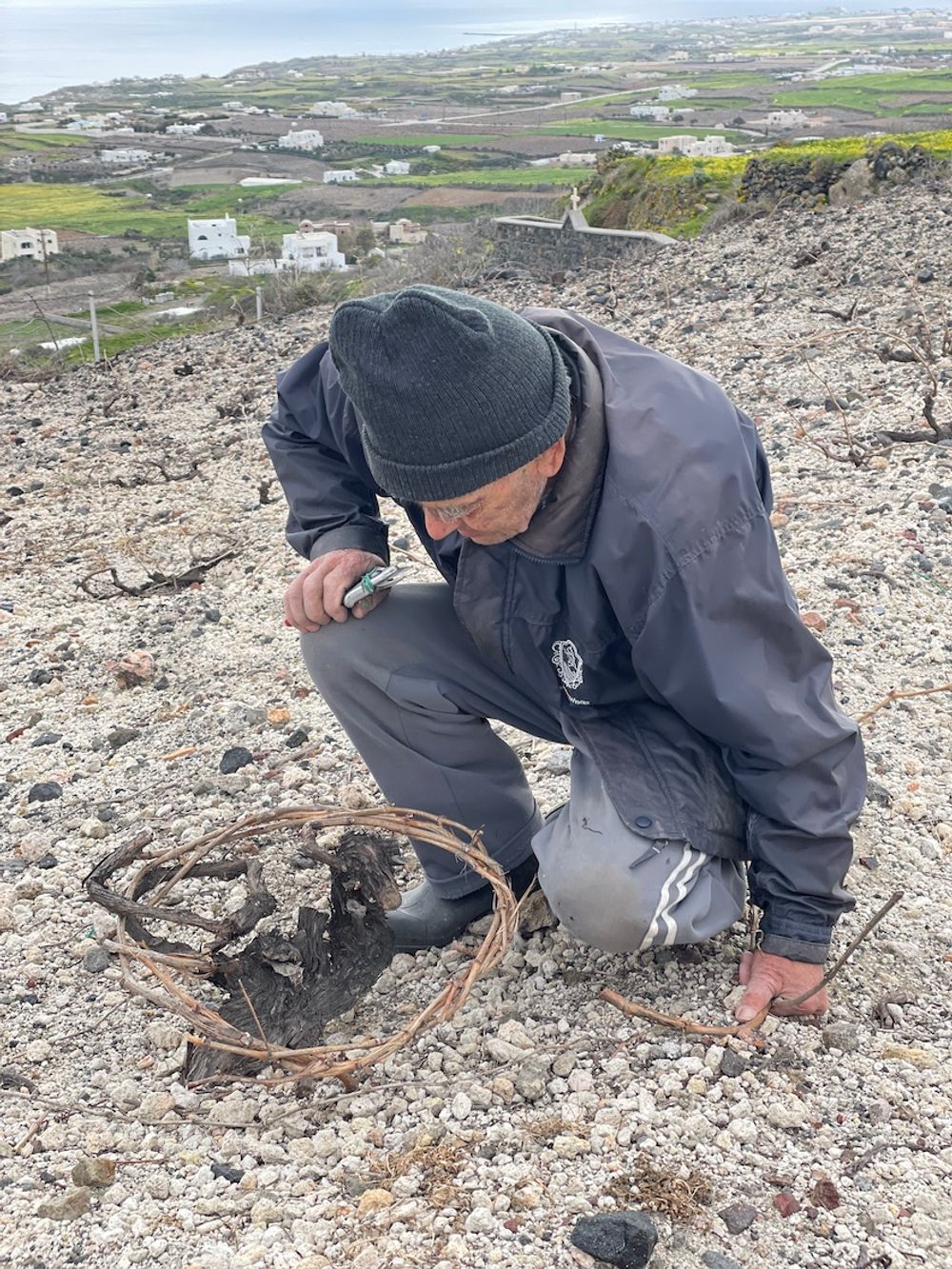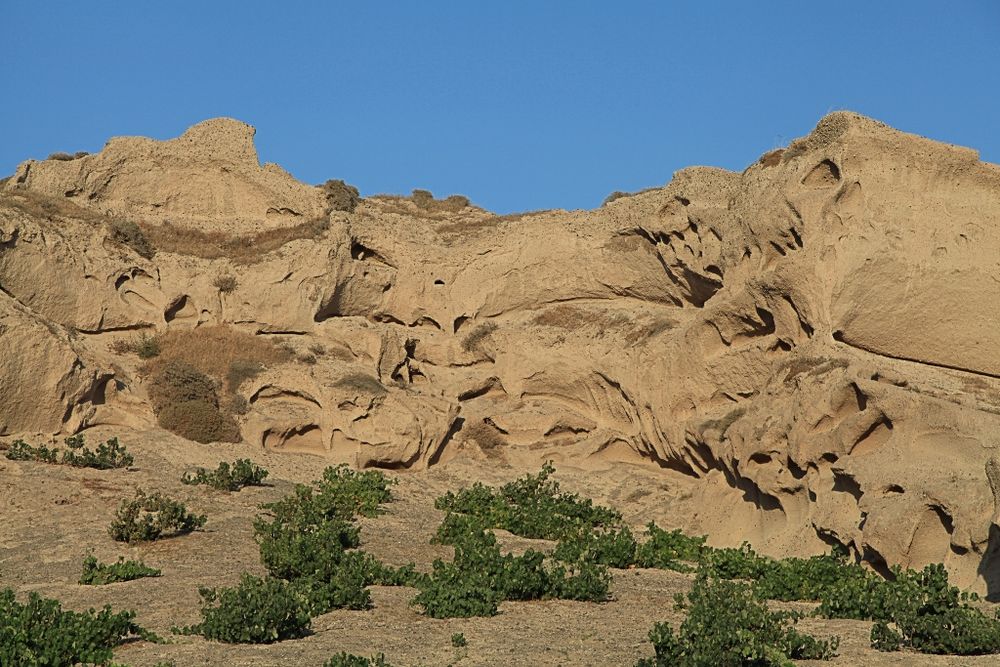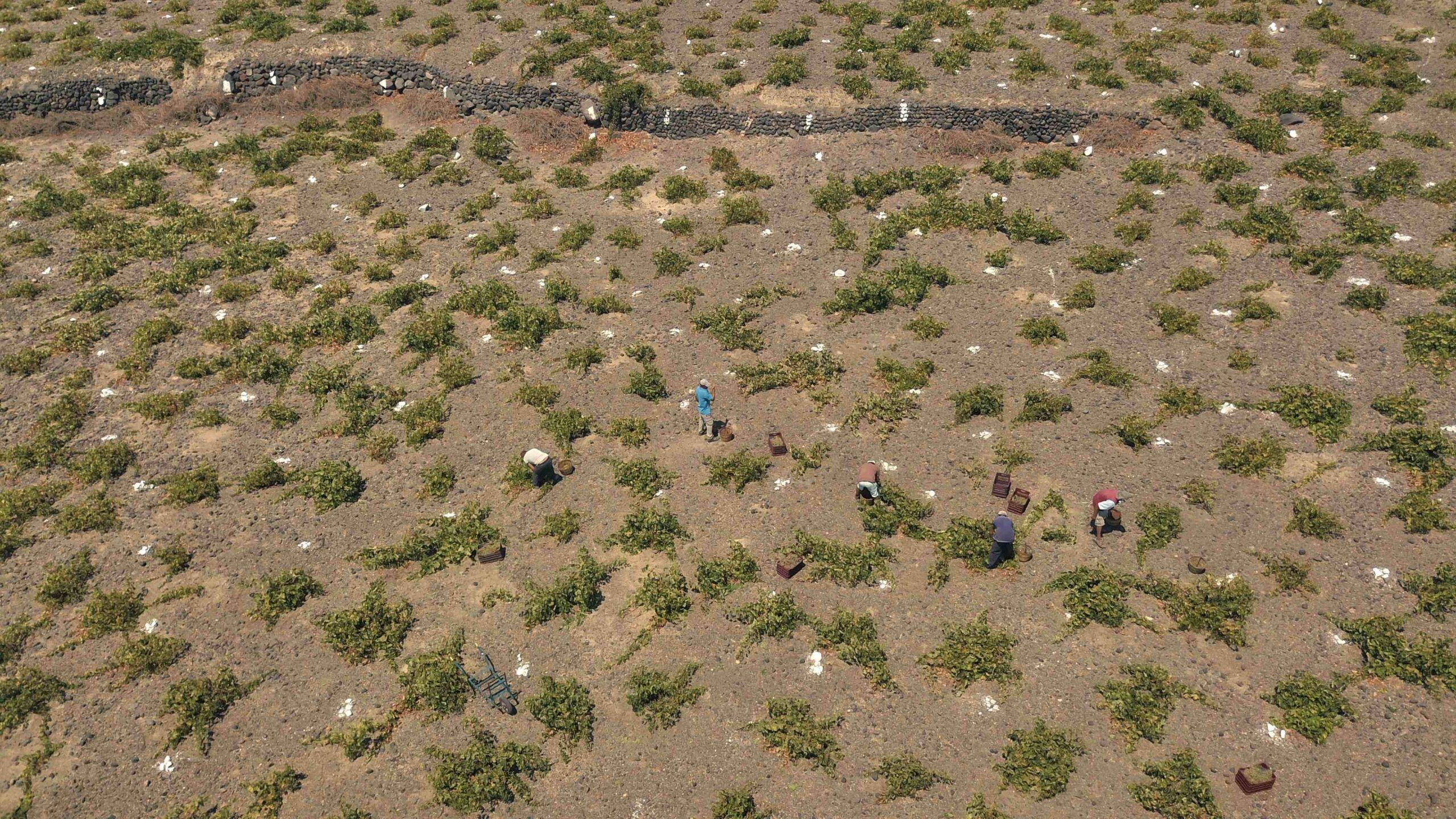The wines of Santorini (PDO Santorini*) “are rapidly, really rapidly gaining a reputation as world-class whites… the wines we import are the epitome of everything we look for: fresh, elegant, complex, intense. They are also wines which shriek of where they come from,” says Lance Foyster MW.

In recent times, vine growers and winemakers have developed a better understanding of the island’s mesoclimates
The Greek Island of Santorini crams its vinous diversity and brilliance into a very small package. The island covers 30 square miles and has 1,400 hectares planted to vine. In total the islanders lay claim to 30 indigenous grape varieties. There are 21 producers, one of which is a cooperative, with over 1,500 members. Yes, parcel ownership is tiny!
Central to any afficionado’s appreciation of PDO Santorini’s wines, requires tapping into your inner volcanologist. Over tens of thousands of years, Santorini has been formed by a series of explosions and earthquakes from four different volcanoes. The most significant in wine terms, took place in 1613 BC. Said to be the second largest volcanic eruption ever witnessed, it destroyed the island as it was then. Lasting between 48 and 64 hours, 60 cubic kilometres of ash, rock and pumice was fired into the air. It is this that is most important for the vine growers of Santorini, because this eruption gifted them a unique soil, known as aspa.
Aspa is mineral-rich and made up of ash, pumice stone, lava, and sand. Its most important quality is that it doesn’t absorb potassium, meaning the grapes are harvested with naturally high acidity and a strong sense of minerality.
“For me, I put Santorini terroir next to the greats of Tokaj, Jerez, Champagne… the combination of soils, local grapes, long tradition and unique training system,” says Klearhos Kanellakis head sommelier at Ekstedt at the Yard.

A vineyard full of the distinctive kouloura
The cool northerly winds are nature’s way of bringing reprieve from the intense summer heat, and the porous soils store what little water and moisture comes its way until it is most needed by the vine. Ancient and ingenious viticulture has led to a unique pruning system, that sees the vine canes wound into concentric baskets. Called kouloura, the grapes are encouraged inside them, where they are protected from the blustery winds and provided shelter from the fiercest sun.
Yields rarely exceed 15 hectolitres per hectare and averages closer to 10 hectolitres per hectare are common. The vines are also very old indeed and likely the oldest on the planet. Typically, the kouloura will stop producing sufficient viable fruit when it is about 75 years old. At this point, the basket is cut off and the vine grower waits for the next spur to emerge. Maths says that as growers have done this five to six times over the last few centuries, this makes some of the original rootstock many hundreds of years old. Wow!

Pruning a kouloura
Assyrtiko: leader of the pack
Whilst Santorini has a dazzling number of indigenous varieties at its fingertips, the leader of the pack is Assyrtiko which makes up at least 85% in the PDO Santorini. This white grape originated on the island, and it excels here, today representing 70% of vineyard plantings. Assyrtiko has naturally good acidity and this is supported by the aspa soil. Common characteristics of the PDO Santorini wines are, ripe tropical citrus fruit, with great concentration, structure, and texture.
“Assyrtiko is a grape variety with a particular character, offering a salty note with beautifully balanced levels of acidity. Mainly the typical expression of the grape itself is a fresh and crispy approach with a pronounced level of minerality where the salinity, the citrus fruits and some tropical notes create a firm structure and a powerful personality… Assyrtiko is the sensation of Santorini and Greece on the palate, mind, and heart,” says Prokopios Mountrichas, assistant head sommelier, at Marcus at The Berkeley.
Modern winemaking is another factor in Santorini’s rapid rise to fame. “Greece made good use of the grants that came with EU membership and the island’s cellars came from the dark ages to being home to some of the most modern wineries in Europe… young Greek oenologists were well-educated and well-travelled. This, with the unique terroir gave PDO Santorini a great set of ingredients to make premium wines,” says Steve Daniel, head of buying, at Hallgarten & Novum Wines.
So, whilst oak fermenting and ageing exists – and can be a significant asset – it is stainless steel and extended lees ageing that predominate in the making of PDO Santorini.

The unique aspa soil creates a dramatic landscape
Equally impressive is Santorini’s drive to continue to push boundaries and explore greater potential. In recent times, vine growers and winemakers have developed a better understanding of the island’s mesoclimates. Tastings have shown that single-vineyard wines from around Pyrgos – the highest point on the island – are more aromatic in flavour. The wines made in the northern part of the island are lighter, in contrast to the heavier, distinctly salty wines that hail from the coastal area of Exo Gonia. Some winemakers are now making ranges of single-vineyard PDO Santorini wines, with the same vinification, to highlight the diversity of Santorini’s terroir.
The PDO Santorini winemaking journey is far from over and getting to know these thrilling, premium wines is set to be a joy for years to come.
Steve Daniel is a passionate advocate for the wines of Santorini and sums them up perfectly: “To buy these wines is to buy history… the wines are precious, rare, made in tiny volumes from unique, Jurassic Park of vineyards.”
- PDO Santorini wines are required to be vinified from at least 85% Assyrtiko, with the remaining 15% from the white grapes, Athiri and Aidani. The PDO requires that yields must exceed 6.5 tons per hectare, however they rarely get above 3 tons. The PDO also includes the naturally sweet wine, Vinsanto, which originated in Santorini, and is made from sundried grapes, a tradition followed since antiquity. In addition, for naturally sweet wines only, small amounts of the white “xenologous” grapes Gaidouria, Katsano, White Muscat, Monemvasia, Platani, Potamisi and the pink skinned Roditis are also allowed.
































